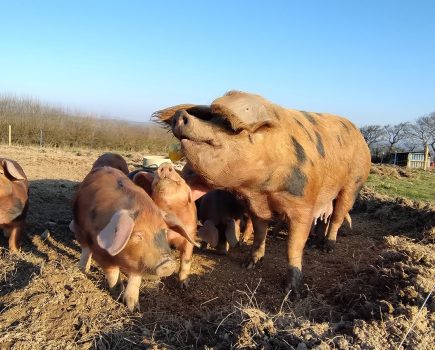Chris Ashton takes a look at the latest slaughter regulations and associated welfare issues
Slaughtering birds presents problems at any scale. At the large scale, there is inevitably a lack of attention to each individual in a mechanised system using trained operatives and official inspections on the fast-moving production line. At the small scale, in rearing for personal consumption, there is at least the satisfaction in knowing that the birds have been treated well over their lifetime. There remains the problem of individual dispatch in a humane way.
Slaughter methods traditionally used on the farm in the past are no longer regarded as acceptable. Now that we know so much more about the social interactions of birds, and their physiology and capacity to feel pain, slaughter methods and legislation have adapted to reflect this. There is continued research into methods of slaughter which are more effective at the point of the death of the bird. This is of even greater importance today because of the sheer numbers produced by the poultry industry for the food chain.
Legislation on slaughter in poultry processing is based on the physiological response of birds to stress, as well as their behaviour. Birds experience pain and suffering the same as humans and other mammals; they have the same nociceptors (pain receptors) as do humans. They have the same capacity for fear, misery, and terror. They possess conscious awareness of their surroundings and their experience. In the book Pain in Birds, Dr Michael Gentle writes: “Comparing pain in birds with mammals, it is clear that, with regard to anatomical, physiological, and behavioural parameters measured, there are no major differences and therefore the ethical considerations normally afforded to mammals should be extended to birds.” (See Karen Davis, PhD http://www.upc-online.org/slaughter/report.html) Thus research in the poultry industry continues to change and improve methods of slaughter on the production line.
Regulations since January, 2013
Slaughter regulations for birds now set higher welfare standards than two years ago, and also affect the smaller producer who sells direct to the consumer. Farm poultry can still be processed on the premises (rather than at a slaughterhouse) provided that: the Food Standards Agency and Local Authority have been notified and given approval; the premises have appropriate health and safety measures in place and have been approved by the Animal Health and Veterinary Laboratories Agency; and the slaughter person holds a Registered Licence for slaughtering birds with the specific equipment to be used.
However, poultry should no longer be killed without prior stunning. This has required small businesses which produce perhaps 20 – 500 birds when using neck dislocation in the past, to upgrade to more welfare-friendly practices. European Regulations now require that a humane stunner is an essential piece of equipment for the protection of animals at the time of killing (PATK).
Operators must:
• Spare animals from avoidable pain, distress or suffering;
• Stun and kill them according to the legally permitted methods;
• Only perform killing and related operations if competent to do so.
Whilst poultry killed by their owner for their private domestic consumption does not currently* fall within this remit the Animal Welfare Act (2006) demands that birds are protected from pain, suffering, injury and disease. So home-producers also need to be aware of welfare recommendations.







